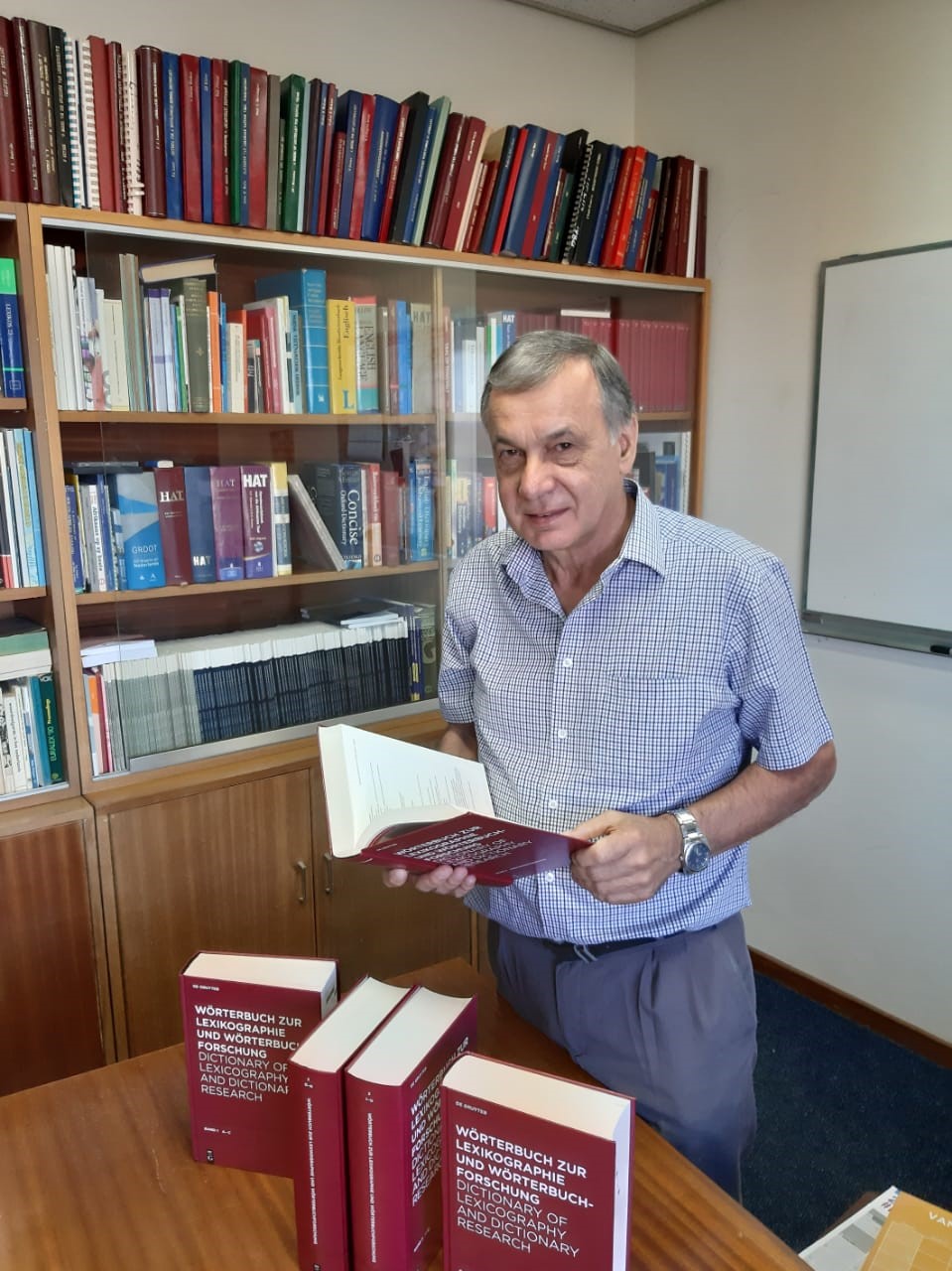The last three volumes of the first five-volume lexicography dictionary to be produced in the world was recently released thanks to a team of lexicographers from across the globe, including Prof Rufus Gouws, a Professor in Afrikaans Linguistics in the Afrikaans and Dutch Department of the Faculty of Arts and Social Sciences at Stellenbosch University.
For the last twenty years Gouws has been working with a number of international academics specialising in lexicography to produce the five-volume lexicography subject dictionary called Wörterbuch zur Lexikographie und Wörterbuchforschung/Dictionary of Lexicography and Dictionary Research. Lexicography is the “activity or occupation of compiling dictionaries".
The project was conceptualised by the late Prof Herbert Ernst Wiegand, an internationally renowned lexicographer and academic specialising in metalexicography (in other words, the study of lexicography), in 1999. Soon after, Wiegand brought together a small group of theoretical lexicographers from across the world to start the process of creating the five-volume dictionary. Some of the lexicographers also had experience in producing dictionaries. Wiegand served as the chief editor of the project until his passing in 2018.
According to Gouws, the dictionary, which was published by the German publishing house De Gruyter, has been a long time coming. Much like the shoemaker without shoes, lexicographers' have spent decades focusing their energies on producing dictionaries for various other subject fields, however, subject terminology for lexicography had never been standardised to this extent before now.
“For a long time, there had been a need to standardise lexicography terms for international use, however, we also wanted to create a resource that included a discussion of the terms as well as references to other resources that could be further researched."
Each volume of the dictionary consists of about 1 000 pages. In the first volume the lexicographic treatment is preceded by a so-called “systematic introduction" that offers an overview of the field of lexicography. This text can be regarded as a condensed text book of lexicography.
Reflecting on the size of the dictionary and the time it took to compile it, Gouws adds: “It took a while to start with the actual compilation of the dictionary because we needed a thorough planning of exactly what we wanted to do and how we wanted to do it. This dictionary about dictionaries was planned in such a way that it displays innovative strategies and procedures of dictionary compilation. Continuous development in the field of lexicography leads to new terms coming to the fore and we also needed to make provision for the inclusion of these terms in the dictionary."
“It is the most inclusive lexicography dictionary that exists in the world today and offers a detailed breakdown of all subject terms in the field. However, one of its most unique features, is that the list of terms was translated into nine other languages, of which Afrikaans is one," says Gouws.
In order to standardise the subject terminology used in lexicography, the team had to create a dictionary that would appeal to lexicographers who speak different languages.
“Each term therefore has a German description followed by an English translation of the term and its description, a more comprehensive description in German, references to related terms and relevant literature and the translation equivalent of the term in Afrikaans, Bulgarian, Spanish French, Hungarian, Italian, Portuguese and Russian."
The fifth volume contains alphabetical registers for each of the languages presented in the dictionary. Users are cross-referred from any term in these lists to the treatment of that term in the main alphabetical text of the dictionary.
The inclusion of Afrikaans lexicography terms in the dictionary speaks to the contribution that Afrikaans lexicographers have made to the development of the field in South Africa and abroad. Lexicography terminology in Afrikaans is also well established. In addition, the Afrikaans and Dutch Department has long played an important role in teaching theoretical lexicography and has offered Masters and PhD programmes in the field since the 1990s.
“We are also one of the partner universities that make up the consortium of universities that offer the European Masters in Lexicography (EMLex), which is a two-year international MA programme funded by Erasmus Mundus. Stellenbosch University is the only non-European university to form part of this consortium and was invited to participate on the basis of the quality and scope of lexicographical work done at our university."
The dictionary can be ordered from De Gruyter at www.degruyter.com.

Photo: Prof Rufus Gouws, a Professor in Afrikaans Linguistics in the Afrikaans and Dutch Department of the Faculty of Arts and Social Sciences at Stellenbosch University, was one of the co-editors of the first five-volume lexicography dictionary to be produced in the world by a team of lexicographers from across the globe.

